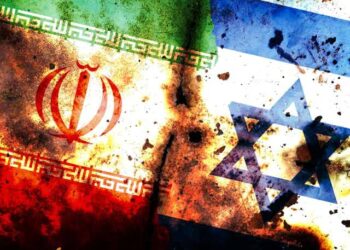The recent terror attack in Pahalgam has significantly escalated India Pakistan tensions, prompting a robust response from India.

The incident has led to a multifaceted retaliation, including economic, diplomatic, and logistical measures aimed at pressuring Pakistan.
As a result, the relationship between the two nations has become increasingly strained, with various sectors being affected.
Key Takeaways
- The Pahalgam terror attack has triggered a significant escalation in india pakistan tensions.
- India has launched comprehensive measures against Pakistan, including economic and diplomatic actions.
- The situation has resulted in heightened pressure on Pakistan across various domains.
- The tensions between the two nations have far-reaching implications.
- The international community is closely monitoring the developments.
- The situation remains volatile and sensitive.
- Diplomatic efforts are being made to de-escalate the tensions.
The Pahalgam Terror Attack: Timeline and Details
On a fateful day, Pahalgam witnessed a horrific terror attack that killed 26 people. The attack, which targeted a group of tourists, sent shockwaves across the region. The incident not only highlighted the security concerns in the area but also strained the already tense relations between India and Pakistan.
Attack Specifics and Casualties
The Pahalgam terror attack was a brutal incident that resulted in significant casualties. 26 people lost their lives, and many were injured. The attack was claimed by a militant organization linked to Pakistan-based groups. The victims were primarily tourists visiting the scenic Pahalgam region.
| Category | Details |
|---|---|
| Date | 22nd April, 2025 |
| Location | Pahalgam, Kashmir |
| Victims | 26 |
| Claimed By | Pakistan-based militant organization |
Initial Responses from Indian Authorities
Indian authorities responded swiftly to the attack, with security forces being put on high alert. The government condemned the attack, terming it a cowardly act of terrorism. Investigations were launched to identify the perpetrators and their handlers.
Pakistan’s Official Stance on the Attack
Pakistan’s official response to the attack was one of condemnation, with the government denying any involvement. However, the incident further strained the diplomatic relations between the two nations, with India holding Pakistan responsible for the attack.
Historical Context of India-Pakistan Tensions
India and Pakistan have a long history of tension, marked by numerous conflicts and terrorist incidents. The relationship between the two nations has been strained since their inception, with various factors contributing to the ongoing hostility.

Recent History of Cross-Border Terrorism
Cross-border terrorism has been a significant factor in the India-Pakistan tensions. Recent incidents, such as the Pulwama bombing in 2019, have escalated tensions between the two nations. As stated by a former Indian defense official, “The Pulwama attack was a stark reminder of the persistent threat of terrorism emanating from Pakistan.”
“The Pulwama attack was a stark reminder of the persistent threat of terrorism emanating from Pakistan.”
The historical context of these tensions reveals a pattern of violence and retaliation. Pakistan’s alleged support for militant groups operating in Kashmir has been a major point of contention.
Previous Major Incidents and Their Aftermath
Previous major incidents, such as the Uri attack in 2016, have also contributed to the strained relations. The Uri attack led to a significant military response from India, including surgical strikes against militant launch pads across the border.
The aftermath of these incidents often involves diplomatic fallout, with both countries engaging in a war of words and accusations. The international community frequently calls for restraint and dialogue to resolve the cross-border terrorism issue.
In conclusion, the India-Pakistan tensions are deeply rooted in a complex historical context, with cross-border terrorism being a critical factor. Understanding this context is crucial for grasping the current state of relations between the two nations.
India Pakistan Tensions and Pahalgam Terror Attack: Immediate Aftermath
Following the deadly Pahalgam terror attack, the relationship between India and Pakistan deteriorated rapidly, marked by expulsions of diplomats and closure of border crossings. The incident not only strained diplomatic ties but also led to a significant escalation in military preparedness along the border.
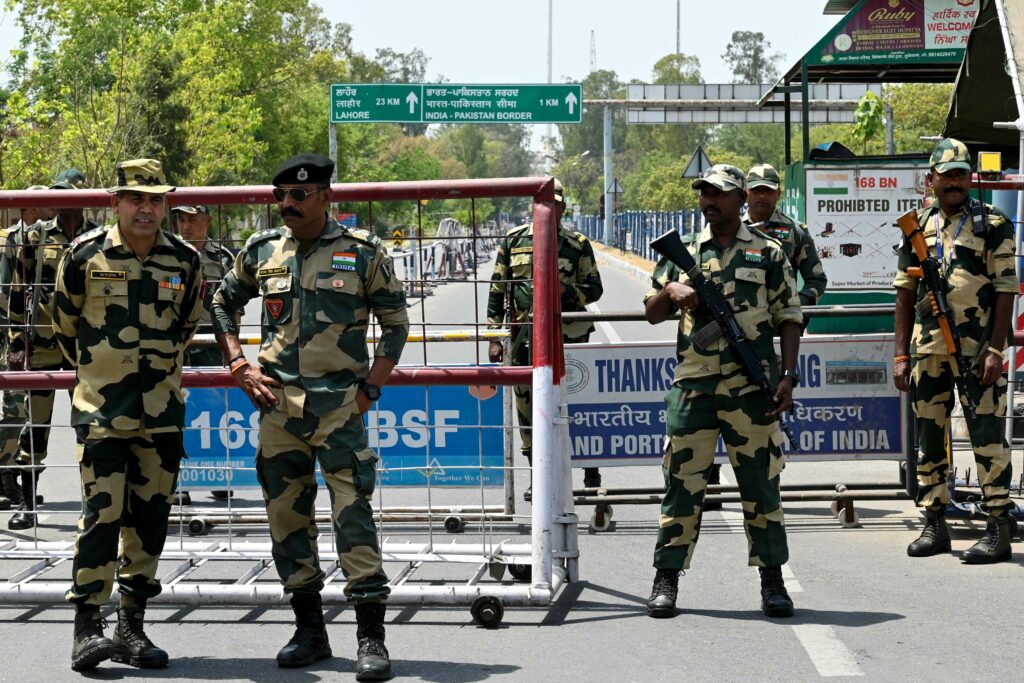
Diplomatic Fallout Between Nations
The diplomatic fallout between India and Pakistan was swift and severe. India expelled Pakistani diplomats, citing their alleged involvement in supporting terrorism. In retaliation, Pakistan shut down a key border crossing, severely impacting trade between the two nations.

The suspension of a decades-old water treaty further exacerbated tensions, with India restricting water flow to Pakistan. This move was seen as a significant escalation, given the critical importance of water resources for Pakistan’s agricultural sector.
| Diplomatic Action | India’s Response | Pakistan’s Response |
|---|---|---|
| Expulsion of Diplomats | Expelled Pakistani diplomats | Recalled Indian diplomats |
| Border Crossing Status | Closed key border crossings | Shut down Indian border posts |
| Water Treaty Status | Suspended water treaty | Protested water flow restrictions |
Public Sentiment and Political Reactions
Public sentiment in both countries turned hostile, with widespread protests against the other nation. In India, there were calls for stricter anti-terrorism laws and stronger action against Pakistan. In Pakistan, the government faced criticism for its handling of the situation, with many demanding a more robust response to India’s actions.
Political reactions were equally charged, with leaders on both sides using the incident to bolster their nationalist credentials. The incident galvanized public opinion, making a return to normal diplomatic relations challenging in the short term.
Line of Control: Ceasefire Violations in 2024
In 2024, the Line of Control (LoC) became a hotspot of ceasefire violations, with nightly small arms fire initiated by Pakistani troops across multiple sectors. This escalation has raised tensions between India and Pakistan, two nuclear-armed neighbors with a history of conflict.
Pakistan’s “Unprovoked Firing” Across LoC
Pakistani troops have been responsible for initiating nightly small arms fire across various sectors of the LoC. This unprovoked firing has been a significant concern for Indian authorities, who view it as a provocation aimed at destabilizing the region.
The frequency and intensity of these ceasefire violations have increased notably since the beginning of 2024. Indian forces have been on high alert to counter these provocations effectively.
Key Statistics on Ceasefire Violations:
| Month | Number of Ceasefire Violations | Casualties Reported |
|---|---|---|
| January 2024 | 15 | 5 |
| February 2024 | 20 | 7 |
| March 2024 | 25 | 10 |
Indian Army’s Tactical Response to Border Provocations
The Indian Army has adopted a robust yet calibrated response to Pakistan’s unprovoked firing across the LoC. The response includes both defensive and retaliatory measures to deter further provocations.
Indian forces have been instructed to maintain a firm stance while avoiding escalation. The tactical response involves advanced surveillance and precision strikes to counter Pakistani aggression effectively.
The situation along the LoC remains volatile, with both sides engaging in a war of nerves. The international community is closely watching the developments, urging restraint on both parties to avoid further escalation.
Pakistan’s Strategic Missile Tests Amid Rising Tensions
Amid escalating tensions with India, Pakistan conducted a series of strategic missile tests. These tests are a significant development in the ongoing military and diplomatic standoff between the two nations.
First Missile Test: Technical Specifications and Timing
The first missile test involved the Abdali Weapon System, a surface-to-surface missile with a range of 450 km. This test demonstrated Pakistan’s capability to deliver precision strikes against potential targets. The timing of this test coincided with heightened tensions along the Line of Control.
Second Missile Test: Escalation Signal
A second missile test was conducted shortly after, further escalating the situation. This test signaled Pakistan’s resolve to counter perceived threats from India. The test was closely monitored by regional and international military observers.
Military Significance and Strategic Messaging
The missile tests carry significant military and strategic implications. They demonstrate Pakistan’s military preparedness and its ability to respond to escalating tensions. The tests also convey a strong message regarding Pakistan’s deterrence capabilities.
The strategic missile tests by Pakistan are a critical aspect of the current tensions with India. Understanding the technical specifications, timing, and military significance of these tests provides insight into the escalating conflict and the strategies employed by both nations.

India’s High-Level Defense Meetings: PM Modi’s Strategic Response
In response to the escalating tensions with Pakistan, Prime Minister Narendra Modi convened a high-level defense meeting. This crucial gathering underscored India’s commitment to addressing the security challenges posed by the recent Pahalgam terror attack.
Meeting with Defense Secretary After IAF and Navy Briefings
Prime Minister Modi held a significant meeting with the Defence Secretary following detailed briefings from the Indian Air Force (IAF) and Navy chiefs. The meeting focused on assessing the current security landscape and discussing strategic responses to the heightened tensions along the Line of Control. The briefings provided a comprehensive overview of the military preparedness and the operational readiness of the Indian armed forces.
Policy Directions and Military Preparedness Measures
The high-level defense meeting resulted in several key policy directions aimed at bolstering India’s defense capabilities. These measures included enhancing surveillance along the border and augmenting the military’s operational readiness. The government also emphasized the need for a coordinated response across different branches of the armed forces to effectively counter potential threats.
The strategic response led by PM Modi reflects India’s resolve to safeguard its national security interests. By strengthening defense mechanisms and ensuring a unified response to security challenges, India aims to deter further aggression and maintain regional stability.
Economic Warfare: Impact of India’s Trade Restrictions on Pakistan
India’s recent trade policies towards Pakistan signify a strategic economic maneuver in the midst of heightened bilateral tensions. The decision to impose trade restrictions marks a significant escalation in the economic warfare between the two nations.
New Trade Barriers and Import Prohibitions
India has enforced a blanket ban on trade with Pakistan, significantly impacting the limited trade between the two countries. This move includes the imposition of new trade barriers and import prohibitions, effectively crippling Pakistan’s ability to export goods to India.
The new trade barriers are comprehensive, covering a wide range of products that were previously traded between the two nations. This drastic measure is expected to have far-reaching consequences for Pakistan’s economy.
| Trade Indicator | Pre-Restrictions | Post-Restrictions |
|---|---|---|
| Trade Volume | $2.5 billion | $0 billion |
| Export to India | $450 million | $0 million |
| Import from India | $2.05 billion | $0 billion |
Economic Consequences for Pakistan’s Economy
The economic consequences for Pakistan are severe, with the trade restrictions expected to lead to significant revenue losses. The impact on Pakistan’s economy will be multifaceted, affecting various sectors that rely heavily on trade with India.
The restrictions will likely lead to increased prices for goods in Pakistan, as alternative, potentially more expensive supply chains are established. This could have a ripple effect, influencing inflation rates and the overall economic stability of the country.
Water as a Diplomatic Tool: India’s Indus Waters Strategy
India’s Indus Waters Strategy has emerged as a critical component in the country’s diplomatic maneuvering against Pakistan. The strategy is closely linked to the Indus Waters Treaty, a decades-old water-sharing agreement between the two nations.
The Indus Waters Treaty Under Scrutiny
The Indus Waters Treaty, signed in 1960, has been a cornerstone of water sharing between India and Pakistan. However, recent escalations have put this treaty under intense scrutiny. India has suspended certain provisions of the treaty, signaling a significant shift in its diplomatic approach towards Pakistan.
This move is seen as a strategic response to Pakistan’s alleged support for cross-border terrorism, which India views as a significant threat to its national security.
Potential Modifications to Water Sharing Agreements
As tensions between India and Pakistan continue to rise, there are indications that the Indus Waters Treaty may undergo modifications. These potential changes could have far-reaching implications for water sharing between the two countries.
India’s water diplomacy efforts are aimed at pressuring Pakistan to take concrete actions against terrorism. By leveraging its control over the Indus River’s tributaries, India is seeking to exert diplomatic pressure on Pakistan.
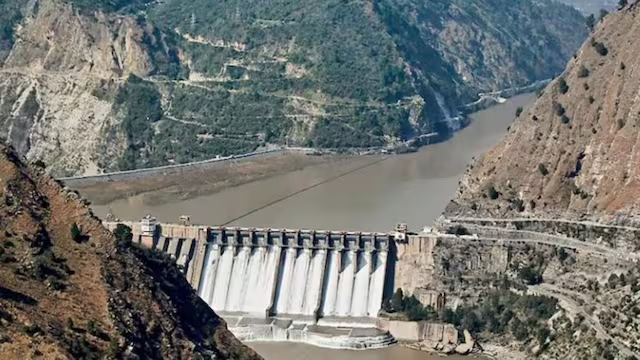
The outcome of these diplomatic maneuvers remains uncertain, but it is clear that water has become a critical tool in India’s diplomatic strategy towards Pakistan.
Airspace Restrictions: Aviation Implications Between the Nations
The recent escalation between India and Pakistan has led to significant airspace restrictions, impacting aviation and beyond. As both countries navigate this tense situation, the aviation implications of these restrictions have become a critical concern.
Current Flight Bans and Routing Changes
In response to the heightened tensions, both India and Pakistan have imposed strict airspace restrictions. India’s Directorate General of Civil Aviation (DGCA) announced the restriction of Pakistani aircraft from entering its airspace, with Pakistan retaliating similarly. This has resulted in significant routing changes for airlines operating between the two countries and other international destinations.
- Flights between India and Pakistan have been completely halted.
- International airlines are being rerouted, adding to flight durations and fuel costs.
- Some airlines are opting for longer routes to avoid restricted airspace.
Economic and Logistical Consequences for Both Countries
The airspace restrictions have far-reaching economic and logistical implications for both India and Pakistan. The aviation industry is facing increased operational costs due to longer flight routes, which in turn affect consumer prices and demand.
- Increased fuel costs for airlines due to longer routes.
- Potential loss of revenue for airports and related services.
- Impact on trade and tourism due to reduced connectivity.
The situation underscores the need for a diplomatic resolution to ease tensions and restore normalcy in air travel between the two nations.
Trade, Water and Airspace: How India Put Pressure on Pakistan
The Pahalgam terror attack prompted India to adopt a coordinated multi-domain pressure strategy against Pakistan. This comprehensive approach aimed to exert significant pressure on Pakistan across various domains.
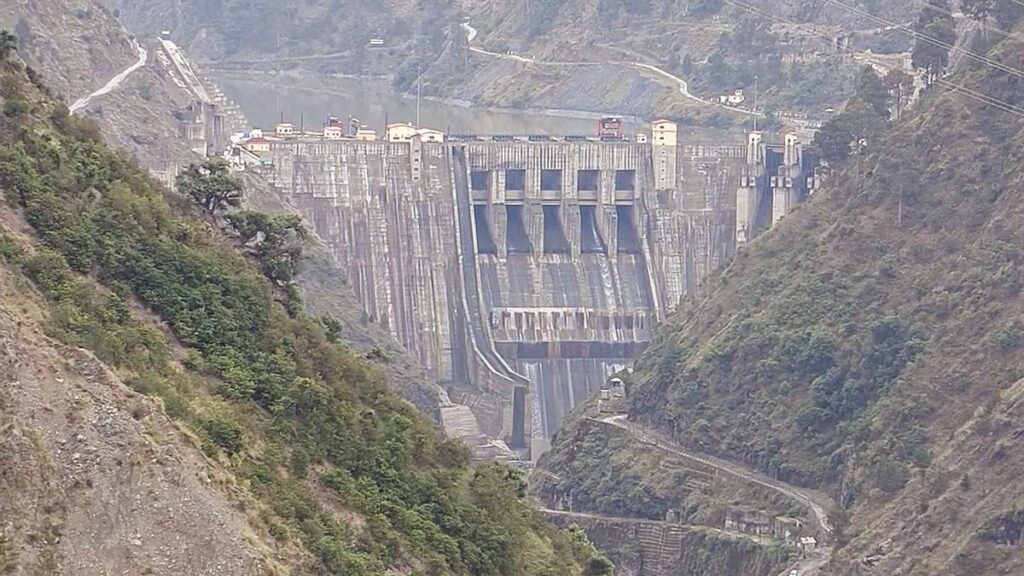
Coordinated Multi-Domain Pressure Strategy
India’s strategy involved a combination of economic, diplomatic, and logistical measures. The key components included:
- Trade restrictions: India imposed new trade barriers and import prohibitions on Pakistan, significantly impacting bilateral trade.
- Water management: India scrutinized the Indus Waters Treaty, potentially modifying water sharing agreements to exert pressure on Pakistan.
- Airspace restrictions: India imposed flight bans and routing changes, affecting aviation between the two nations.
A detailed analysis of these measures is presented in the table below:
| Domain | Measure | Impact |
|---|---|---|
| Trade | New trade barriers and import prohibitions | Significant decline in bilateral trade |
| Water | Scrutiny and potential modification of Indus Waters Treaty | Potential water shortages in Pakistan |
| Airspace | Flight bans and routing changes | Increased travel time and logistical challenges |
Pakistan’s Limited Response Options
Pakistan faced significant challenges in responding to India’s multi-domain pressure strategy. The limited response options available to Pakistan included:
- Diplomatic efforts: Pakistan could engage in diplomatic negotiations to ease tensions.
- Economic diversification: Pakistan could attempt to diversify its economy to reduce dependence on India.
- Military response: Pakistan could consider a military response, although this carried significant risks of escalation.
Pakistan’s response will be crucial in determining the future trajectory of India-Pakistan relations.
Kashmir Security Updates Following Pahalgam Attack
Following the recent Pahalgam terror attack, the security landscape in Kashmir has undergone a substantial transformation. The incident has prompted Indian authorities to reassess and bolster security measures across the region.
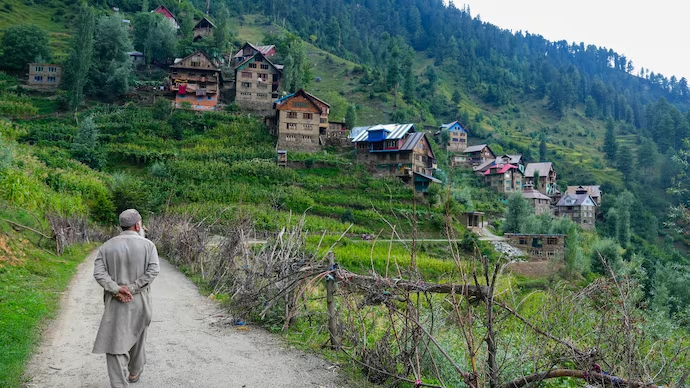
Enhanced Security Measures in the Region
The Indian Army and other security agencies have intensified their presence in Kashmir, particularly around sensitive areas and tourist spots. This includes the deployment of additional troops and the establishment of new checkpoints to prevent any potential security breaches.
Surveillance has also been heightened, with increased monitoring of communication networks and suspicious activities. The security forces are working closely with local intelligence to identify and mitigate potential threats.
Impact on Local Population and Tourism Industry
The enhanced security measures have had a mixed impact on the local population. While some appreciate the increased security, others are concerned about the restrictions on movement and the potential for disruption to daily life.
The tourism industry, a significant contributor to the local economy, has also been affected. The heightened security presence and travel advisories have led to a decline in tourist arrivals, impacting local businesses that rely on tourism.
Despite these challenges, the local administration is working to ensure that the security measures are implemented in a way that minimizes disruption to the local population and supports the recovery of the tourism industry.
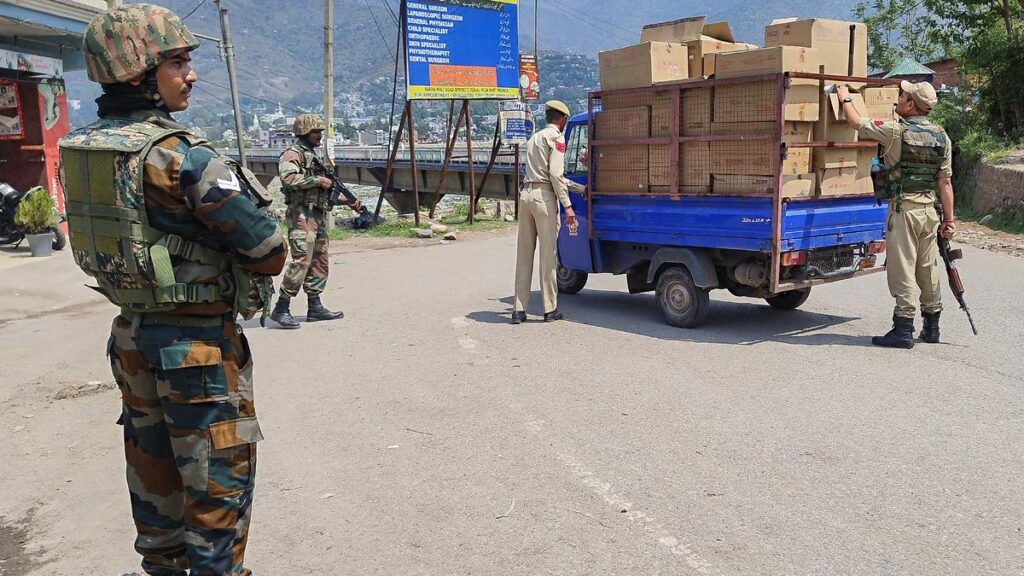
Latest India-Pakistan Border Clashes 2024: Chronology and Intensity
2024 has seen a surge in border clashes between India and Pakistan, with both countries engaging in heavy exchanges of fire. The situation along the Line of Control (LoC) has remained volatile, with multiple incidents reported over the past few months.
Major Incidents Along the Line of Control
Several significant incidents have been documented along the LoC, highlighting the escalating tensions between the two nations. Ceasefire violations have become more frequent, with both sides accusing each other of initiating hostilities.
- On January 10, 2024, a major exchange of fire was reported in the Keran sector, resulting in casualties on both sides.
- In February 2024, Pakistan’s “unprovoked firing” across the LoC was met with a robust response from the Indian Army.
- March 2024 saw another significant escalation in the Naugam sector, with both countries employing heavy artillery.
Casualty Assessment and Infrastructure Damage
The intensified clashes have resulted in significant human suffering and infrastructure damage. Casualties have been reported on both sides, including military personnel and civilians caught in the crossfire.
The infrastructure along the LoC has also suffered, with reports of damage to buildings and displacement of local populations. The economic impact of these clashes is also being felt, particularly in areas dependent on cross-border trade.
| Incident Date | Location | Casualties |
|---|---|---|
| January 10, 2024 | Keran sector | Multiple |
| February 15, 2024 | Naugam sector | Several |
| March 20, 2024 | LoC vicinity | Reported |
International Reactions to India-Pakistan Escalation
As tensions between India and Pakistan continue to rise, the global community is responding with a mix of diplomatic efforts and cautious statements. The international community is keen to see a de-escalation of the conflict, given its potential implications for regional and global security.
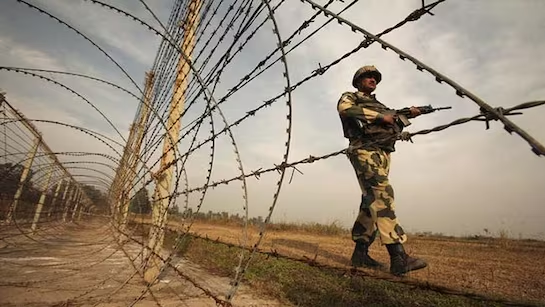
United States and Western Powers’ Diplomatic Stance
The United States and other Western powers have called for restraint from both India and Pakistan. The US State Department has issued statements urging both nations to avoid further escalation and to engage in diplomatic dialogue to resolve their differences. European nations, including the UK and France, have echoed similar sentiments, emphasizing the need for a peaceful resolution.
China and Other Regional Powers’ Positions
China, a key ally of Pakistan, has taken a relatively cautious stance, calling for calm and restraint. China’s response is significant given its historical and current influence in the region. Other regional powers, such as Russia, have also expressed concern over the escalating tensions and have supported efforts to encourage dialogue between the two nations.
United Nations and International Organizations’ Responses
The United Nations has issued a statement calling for an immediate de-escalation of tensions and urging both countries to respect their international obligations. Other international organizations, including humanitarian agencies, are on alert to respond to any potential humanitarian crisis that may arise from the conflict.
| Country/Organization | Response |
|---|---|
| United States | Urged restraint and diplomatic dialogue |
| China | Called for calm and restraint |
| United Nations | Urged immediate de-escalation |
Conclusion: The Future of India-Pakistan Relations
The ongoing tensions between India and Pakistan have far-reaching implications for regional stability and global security. The recent Pahalgam terror attack has further strained relations, with both countries engaging in a series of diplomatic and military maneuvers.
As India continues to apply pressure on Pakistan through trade restrictions, water diplomacy, and airspace limitations, the international community watches closely. The United States, China, and other regional powers have expressed concerns, urging restraint and diplomatic engagement.
The future of India-Pakistan relations remains uncertain, with ongoing tensions and diplomatic efforts to de-escalate the situation. A lasting resolution to the conflict will require sustained dialogue and a commitment to addressing the underlying issues driving the tensions.
As the situation continues to unfold, one thing is clear: the path forward will be shaped by the complex interplay of domestic politics, regional dynamics, and international pressures. Understanding these factors will be crucial to navigating the challenges ahead and working towards a more stable and peaceful future for the region.
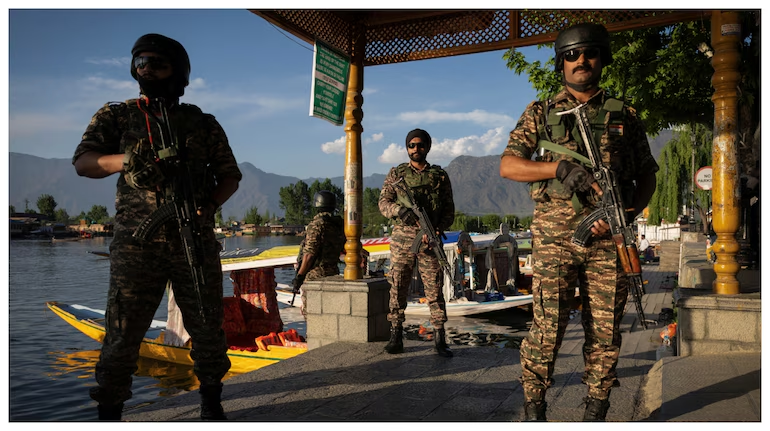
FAQ
What triggered the recent escalation of tensions between India and Pakistan?
The Pahalgam terror attack triggered the recent escalation of tensions between India and Pakistan, prompting India to take various measures to pressure Pakistan.
What were the specifics of the Pahalgam terror attack?
The Pahalgam terror attack involved a terrorist strike that resulted in significant casualties, prompting a strong response from Indian authorities.
How has Pakistan responded to the Pahalgam terror attack?
Pakistan has denied any involvement in the Pahalgam terror attack, maintaining its official stance of not being responsible for the incident.
What is the historical context of India-Pakistan tensions?
The historical context of India-Pakistan tensions is rooted in recurring patterns of cross-border terrorism and diplomatic fallout, with recent incidents exacerbating the situation.
What has been the diplomatic fallout between India and Pakistan following the Pahalgam attack?
The diplomatic fallout between India and Pakistan has been significant, with both countries experiencing heightened tensions and strained diplomatic relations.
How has the Line of Control been affected by the escalating tensions?
The Line of Control has witnessed significant ceasefire violations in 2024, with Pakistan’s unprovoked firing prompting a tactical response from the Indian Army.
What is the significance of Pakistan’s strategic missile tests amid rising tensions?
Pakistan’s strategic missile tests are seen as a demonstration of its military capabilities and a signal of escalation, potentially altering the military dynamics between India and Pakistan.
How has India responded to the escalating situation with high-level defense meetings?
India has held high-level defense meetings, including PM Modi’s meeting with the Defence Secretary, to strategize its response and enhance military preparedness.
What is the impact of India’s trade restrictions on Pakistan’s economy?
India’s trade restrictions have imposed significant economic pressure on Pakistan, with new trade barriers and import prohibitions affecting Pakistan’s economy.
How has India’s Indus Waters Strategy affected water-sharing agreements with Pakistan?
India’s Indus Waters Strategy has led to scrutiny of the Indus Waters Treaty, potentially modifying water-sharing agreements and impacting diplomatic relations.
What are the implications of airspace restrictions between India and Pakistan?
The airspace restrictions have resulted in significant aviation implications, including flight bans and routing changes, with economic and logistical consequences for both countries.
How has India coordinated its pressure strategy against Pakistan across multiple domains?
India has employed a coordinated multi-domain pressure strategy, leveraging trade, water, and airspace measures to exert pressure on Pakistan, limiting its response options.
What are the latest updates on the security situation in Kashmir following the Pahalgam attack?
The security situation in Kashmir has seen enhanced security measures, impacting the local population and tourism industry.
What have been the major incidents along the Line of Control in 2024?
The Line of Control has witnessed significant clashes in 2024, resulting in casualties and infrastructure damage.
How have international powers and organizations responded to the India-Pakistan escalation?
International powers, including the United States, Western powers, China, and other regional powers, have taken diplomatic stances, while international organizations like the United Nations have responded to the escalation.




































